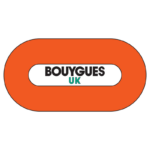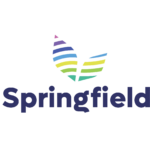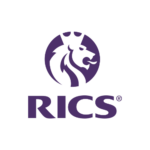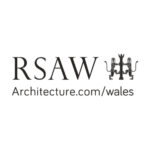Two presentations, “Delivering Social Value” and “Connecting a Community”, provided an overview of how school buildings can generate social value, and some of the methods and tools which can be implemented to gather data and fuel decisions to maximise positive social impact.
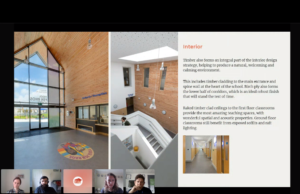
Delivering Social Value
Schools are often the heart of a community; primary school, Ysgol Pen Rhos, set out with an aim of becoming just that. Ysgol Pen Rhos was completed in 2018 and houses up to 500 pupils, many of whom have experienced adverse childhood experiences (ACEs). The site is located in Llanelli, an area in Carmarthenshire, which had been ranked in the top 3% of socially deprived areas in the UK. By the time the derelict site was selected it had attracted vandalism, anti-social behaviour, and was heavily contaminated as it used to be one of the world’s largest copperworks facilities.
Social value was important from start to finish: local contractors were recruited and apprenticeship schemes were introduced from the outset. The school boasts a full size 3G football pitch open for community use and has hosted Swansea City and the Welsh women’s football team. Doing so has provided pupils with role models to look up to and aspire to be. As social value and community were significant drivers within this project, it was important that spaces could be used out of school hours. For instance, at the weekend for activities such as Sunday school: where the local community can congregate, connect and learn from one another.
It was important to create a welcoming and nurturing environment to address the day-to-day challenges that have stemmed from ACEs. Design played a significant role in creating a suitable environment. The design mimicked the traditional architecture from the local area, offering a sense of familiarity and comfort. Use of timber produced a sense of warmth within the interior, producing a calming environment. Not only has the school produced social value and nurtured its pupils, it has also been beneficial for staff and families.
Connecting a Community
This presentation was given by Atkins – engineering and design specialists – who understand how the built environment can impact end users from health and well-being to social cohesion. Elements of the built environment which influence cognition and well-being can include lighting, aesthetics, use of colour and thermal comfort. Atkins use a variety of methods and tools to understand social value and social impact not only for pupils and staff, but also for parents, caregivers and the broader community. Four tools were discussed:
Urban Community Index: This is used for mapping social infrastructure, implementing a combination of geospatial data analysis and human centred design research to understand how spaces shape experiences. It gathers data on the following areas: people, place, spatial connectivity and perception of a space.
Human Centred Briefing Tool: This is a framework which breaks down elements of the built environment to understand the way it impacts users. It has nine parameters covering lighting, air quality, connection and adaptability. Data are collected through digital surveys, open to all end users. Findings provide useful feedback to allow designers to understand the potential impact of their design decisions.
Themes, Outcomes and Measures (TOMs): A social value calculator that aims to identify specific areas that may gain the most value. It covers five themes: growth, innovation, environment, social and employment. This framework enables designers to track their progress against their proposed objectives.
RIBA’s Social Value Toolkit: This toolkit was built around three themes: social connection, flexibility and positive emotions. It is a questionnaire, similar to a post occupancy evaluation, which invites participants to describe their feelings towards their new environment in comparison to their previous one.
Atkins have applied these tools to many of their projects which has ultimately led to increased social value and impact. At present, they have a couple of projects which are trialling RIBA’s Social Value Toolkit. They look forward to reviewing and sharing their findings from these case studies in the next couple of years.

Written by Holly Passmore, Thought Leadership Consultant, Step Connect2
To Stream this Webinar On-Demand CLICK HERE.



